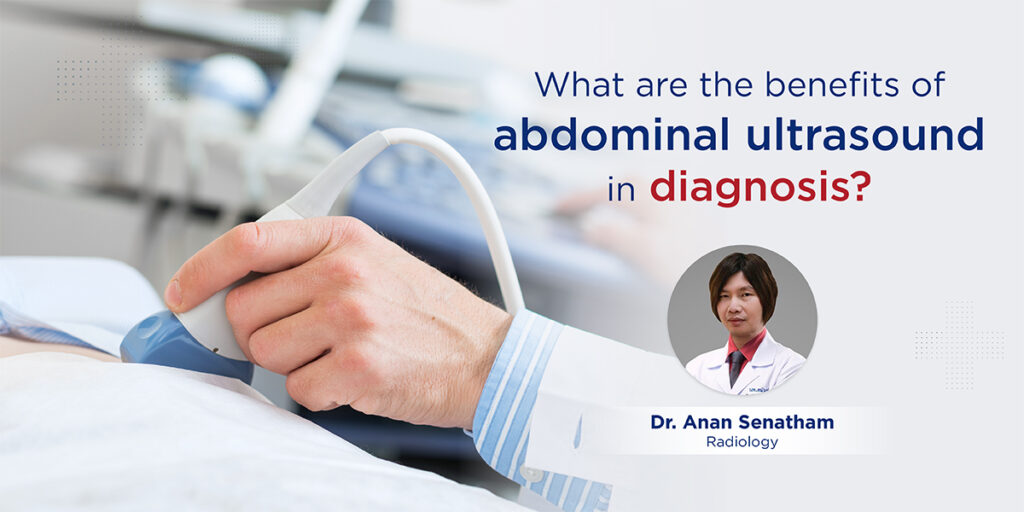
Ultrasound is a diagnostic technique using high frequency sound waves to create an image of the inside of your body. It can examine the organs to reveal some abnormalities, which is therefore useful in the diagnosis. In general, abdominal ultrasound is painless because it only uses a probe to move on the external abdominal surface without the use of anesthesia or injections and the sound waves used are safe and non-invasive.
Most of the health check-ups usually include ultrasound of 2 parts of the body:
- Upper Abdominal Ultrasound or Upper Abdominal Ultrasonography
- Lower Abdominal Ultrasound or Lower Abdominal Ultrasonography
Upper abdominal ultrasound
It is an examination of the organs in the upper abdomen above the navel level, such as the liver, spleen, gall bladder, upper bile duct, kidneys, aorta and pancreas (part of the pancreas can be seen in some cases.) to look for abnormalities such as kidney stones, gallstones, liver mass, kidney tumor, etc. It can be done in both men and women.
Lower abdominal ultrasound
It is an examination of the organs in the lower abdomen below the navel, such as the uterus, ovaries (female), prostate (male), bladder and other areas of the lower abdomen to look for abnormalities such as uterine fibroids, tumors/ovarian cysts, abnormal-sized prostate gland (male), bladder stones and tumors.
Lower abdominal ultrasound is often performed in women aged 30 years or older, or those who experience regular menstrual pain or menorrhagia or hypomenorrhea. The examination is performed using a probe while the patient has a moderate need for urination. This is because the intestinal air obscures the uterus and ovaries in women or the prostate gland in men, resulting in blurred vision of the organs. However, when there is enough water accumulated in the bladder, it allows visualization of the uterus, ovaries, prostate, or bladder stones.
Why do you need an abdominal ultrasound?
- To examine the abdominal organs based on the age or the health check-up program in order to find abnormalities in the early stages while there are no symptoms such as kidney stones, gallstones, liver masses for the purpose of treatment planning or follow-up.
- To examine when there is persistent or chronic pain, stiffness or distension, or an increase in the size of the abdominal organs or an abnormal liver blood test.
- It can be used as repeat examination for follow-up on certain abnormalities that have already been treated or for the purpose of monitoring the changes of such abnormalities.
Preparation guidelines for abdominal ultrasound
- You should abstain from food and drink for at least 6 hours.
- For lower abdominal ultrasound, you should drink water (at least 500 ml) and hold urine.
- For those who need ultrasound of both the upper and lower abdomen, do not drink water before the examination.
Ultrasound procedures
In the abdominal ultrasound, the patient lies on a bed and then a cold gel is applied to the skin area to be examined to improve the transmission of sound waves from the probe through the skin to visualize the abdominal organs. During the examination, the probe is gently pressed on and moved over the skin of the area to be examined. In the ultrasound examination, the doctor and patient can simultaneously see the organ images on the screen. The ultrasound examination time depends on the location of the organ to be examined and the abnormality.
Ultrasound examination usually does not have any side effects and patient can go home immediately after the examination. The patient can drive, drink, eat and perform other activities as usual. It takes a short time to achieve the ultrasound result after the examination. In most cases, the images obtained from the ultrasound are analyzed and a report is sent to the doctor. The doctor may explain or discuss the ultrasound result within that day whether there is normal in any organ.






